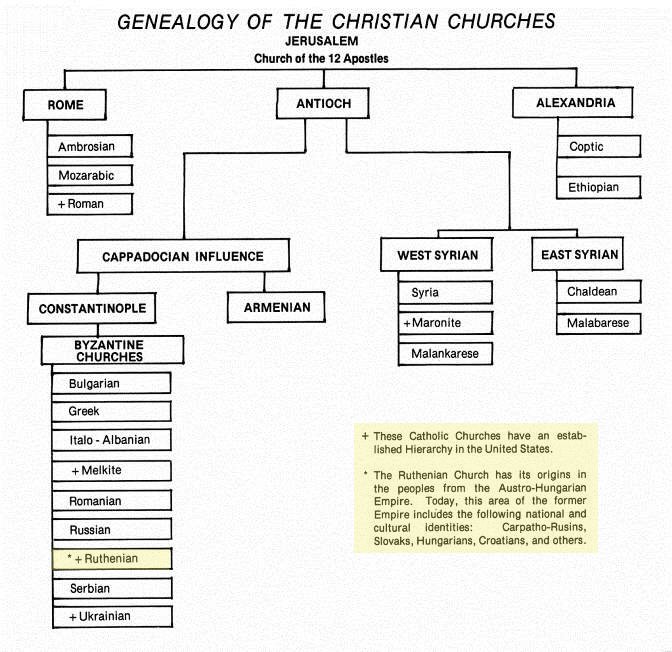|
Eastern Church Roots
The Catholic Church is a communion of churches.
It is made up of churches from the Eastern Tradition and the Western Tradition.
Eastern Catholics are in union with Rome. We share the same basic faith and the
same mysteries (sacraments), however, our way of expressing them follows the
same tradition as the Orthodox churches. In reality, there are many Eastern
churches, each with its own heritage and theology, liturgy and discipline.
Jesus sent his disciples to the four corners of the world to spread the Gospel.
Eventually, four great centers of Christianity emerged with distinctive
Christian customs, but the same faith. These centers were Jerusalem, Antioch,
Rome and Alexandria. A few centuries later when the capital of the Roman Empire
was moved to the Eastern city of Byzantium, later renamed Constantinople, an
adaptation of the Antioch celebration of the liturgy was made.
From this powerful cultural center the Byzantine church emerged (Radvansky,
Joseph. A Brief Explanation of the Eastern Catholic Churches, Introduction).
The Ruthenian faith-journey begins in the homeland of our ancestors, “the old
country,” central Europe.
Envision a map of the European continent. Our ancestral homeland known variously
as Carpathian Rus’, Transcarpathia, Carpatho-Ruthenia, Carpatho-Russia, and
Carpatho-Ukraine is the very heart of the picture, presently eastern Slovakia,
southwest Ukraine, northeast Hungary and northwest Romania.
The religious life of these people came from the East. Like the other East
Slavs, the Carpatho-Rusins received Christianity from the Byzantine Empire.
In the year 863, two Byzantine Greek missionaries, the brothers Cyril and
Methodius – “The Apostles to the Slavs” – introduced Christianity and the new
Slavonic alphabet to Greater Moravia, the present Czech Republic and Western
Slovakia.
Thereafter, the followers of these Byzantine missionaries moved eastward,
eventually converting the Ruthenian people.
 |
